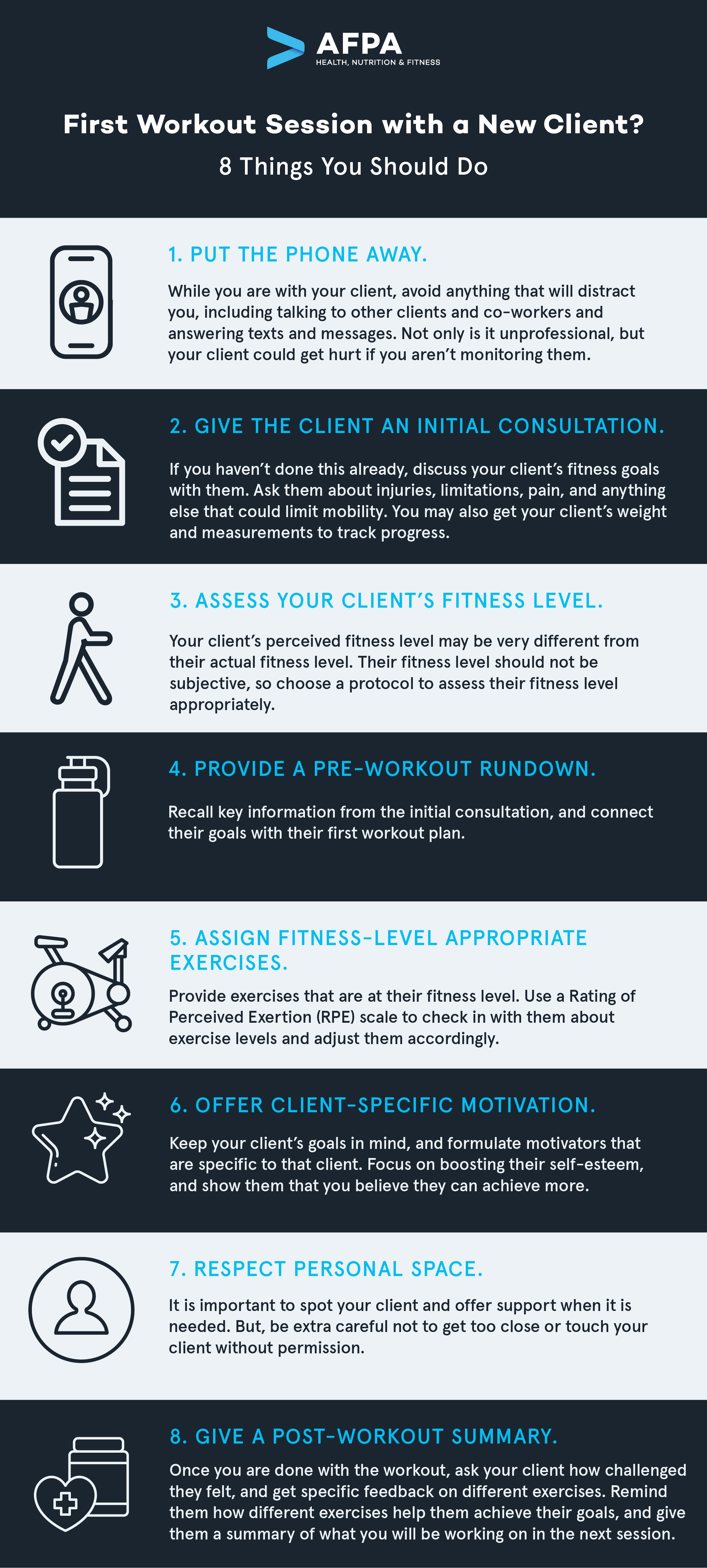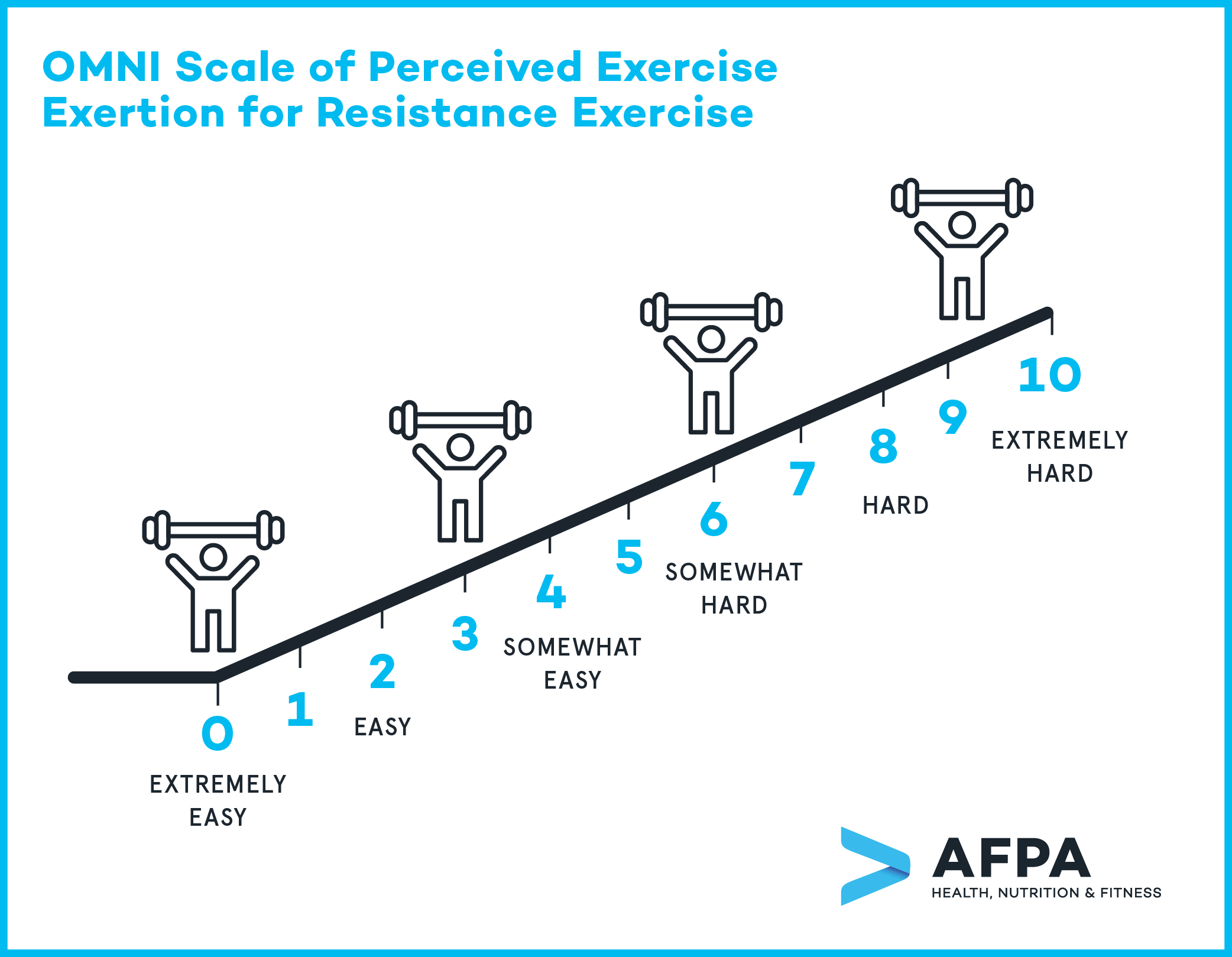You just got an email in your inbox, confirming you have a brand new fitness client! Congratulations!
Now, on to making a great first impression.
What are the first things you should do with your fitness client to get them excited, create a sense of trust, and set the stage to keep them motivated?

What Happens When You Start Out on the Right Foot with a Fitness Client
When a client decides to take the step and start a new exercise regimen with a professional like you, they are putting a lot of trust in your expertise.
Before hiring you, they likely considered many other options, including buying into an app, winging it by themselves, or hiring other personal trainers or fitness coaches.
Making a good first impression will do the following for your clients:
- They will be motivated to meet their fitness goals. Boosting their self-confidence and reminding them of how their exercise sessions are helping them to meet their fitness goals will help keep them motivated session after session.
- They will listen to what you have to say because they trust you as the expert.
- They will stay on track with their sessions with you. The combination of motivation and trust in you as their fitness coach will help keep them on track.
- You’ll see them keep coming back. Unless you deviate significantly from how you worked with them in the first session, the feeling of motivation and trust will stick with them.
- They will refer you to their friends and family: There’s nothing like a hyped-up client to do some guerilla marketing for you.
When you put the eight things you need to do with your new fitness client into practice in your first session, you will be ensuring and reinforcing all of the points above.
Become a Certified Holistic Nutritionist Online in 6 Months or Less
8 Things You Need to Do with Your New Fitness Client
Put the phone away.
While you are with your client, avoid anything that will distract you, including talking to other clients or co-workers and answering texts and messages. Not only is it unprofessional, but your client could get hurt if you aren’t monitoring them.
Note that if you are using your phone as a timer, a workout plan tracker, or other tooll during the session, make sure you communicate this to your client and avoid using it for other purposes.
Give the client an initial consultation.
Some personal trainers offer a free consultation before starting to work with a client. However, this isn’t always the case. If you haven’t met with your client before, take some time before beginning the first session to do a short consultation.
During the consultation, you’ll want to discuss your client’s fitness goals with them. You can ask your client questions like:
- What motivates them?
- What do they want to achieve in their fitness journey in the short and long term?
- What sort of motivation doesn’t work for them?
- What are their strengths and weaknesses?
- What areas of their body do they want to work on most?
- Also ask them about injuries, limitations, pain, and anything else that could limit mobility. Don’t forget to ask them about their exercise and sports history.
You may also get your client’s weight and measurements to track progress.
If you want more inspiration, read these six key questions personal trainers should be asking their clients.
Assess your client’s fitness level.
One of the biggest mistakes fitness coaches can make is giving their clients more than they can safely handle when it comes to the weight they can lift, the duration of cardio, and repetitions of each exercise. Going overboard can not only overwhelm your client, it can also cause injury. If your client gets injured on the first session with you, they probably won’t be coming back.
During the initial consultation, you should have asked your client about what their past or current exercise regimen is if any. You might have even asked them outright what they think their fitness level is.
However, your client’s perceived fitness level may be very different from their actual fitness level. Make sure to test for cardio, flexibility, and strength separately. While there are many methods for assessing fitness level, remember that fitness level isn’t objective. You should choose a specific protocol you want to use.
Provide a pre-workout rundown.
Many fitness coaches jump right into the workout when their clients get online or walk through the doors. While you may have a good idea of what you will be doing with the client, they may feel disoriented, especially if they are new to working out.
Recall key information from the initial consultation, and connect their goals with the plan for their first workout. This gives the client confidence that you are aware of their fitness goals and have given thought to the exercises that will help them meet their goals.
Assign fitness-level appropriate exercise.
Once you have a good idea of their fitness level, provide exercises that are at their fitness level. Check in with them to ask how they feel with different weights and exercises, and adjust them accordingly. One of the ways you can do this is by using a scale called a Rating of Perceived Exertion (RPE). This is a subjective scale where clients rate how exerted they are during an exercise.
One of the most popular RPE scales uses a rating of 0 to 10, where 0 is extremely easy, and 10 is extremely hard.
Below is a visual tool that represents the RPE scale for resistance exercise.

Based on the OMNI scale of perceived exercise exertion for resistance exercise. They should feel challenged but not exhausted with the exercises you provide to them.
Offer client-specific motivation.
Keep your client’s goals in mind and formulate motivators that are specific to that client. Focus on boosting their self-esteem, and show them that you believe they can achieve more, keeping in mind that physical fitness is about much more than how it makes a client look.
If your client is exercising to improve heart health, but you keep on referring to how exercise are burning fat in their abdomen, they may not only feel offended, but they will feel that you are disconnected from their goals.
Respect personal space.
It is important to spot your client and offer support when it is needed. But, be extra careful not to get too close or touch your client without permission.
An easy way to avoid problems with personal space boundaries is to explain to clients beforehand that it could be beneficial to them to have you lightly touch their body to encourage muscle activation, engagement, or make an exercise more challenging. The client should give permission and the trainer should get permission before doing so on each occasion.
Give a post-workout summary.
Once you are done with the workout, ask your client how challenged they felt, and get specific feedback on different exercises. Remind them how different exercises help them achieve their goals, and give them a summary of what you will be working on in the next session.
Achieve your goal of becoming a Yoga Instructor through AFPA.




